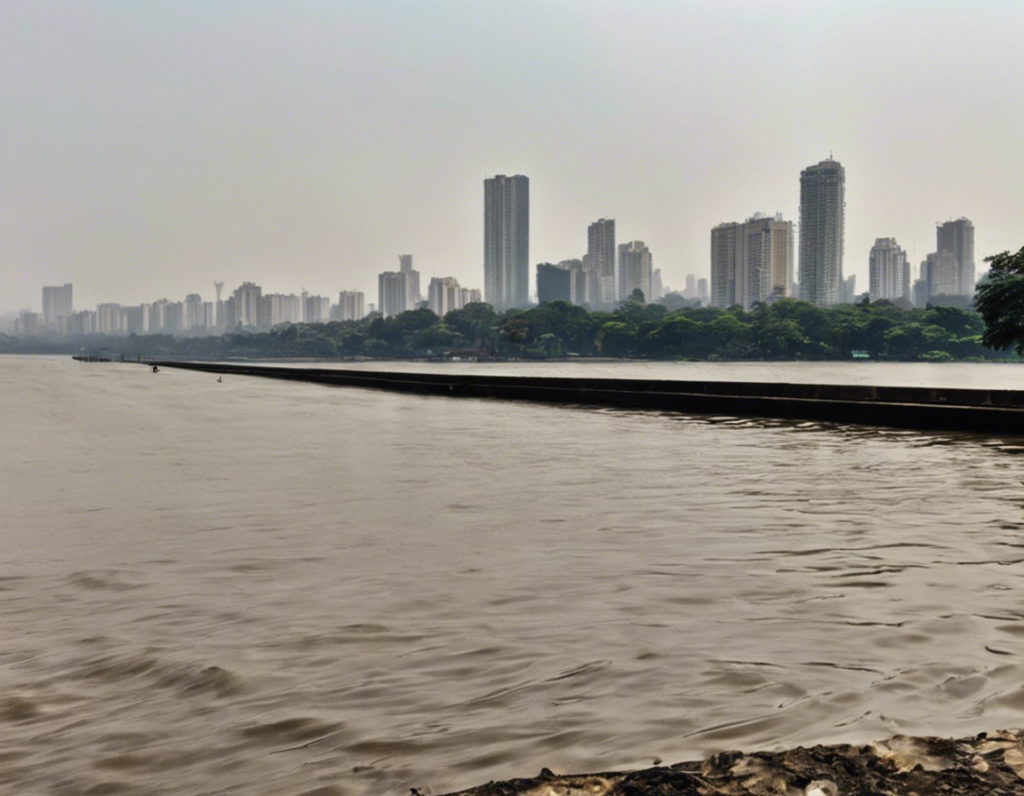Introduction
Mumbai, the bustling metropolis on the western coast of India, is known for its vibrant culture, diverse population, and unique landscape. However, the city faces numerous challenges, including flooding, especially during the monsoon season. One of the critical factors contributing to this issue is the management of the city’s lake levels. In this comprehensive article, we will delve into the significance of monitoring Mumbai’s lake levels, the impact of fluctuating water levels, current monitoring mechanisms in place, and the importance of proactive measures to mitigate potential risks.
Importance of Monitoring Mumbai’s Lake Levels
Mumbai is home to several lakes, including Powai Lake, Vihar Lake, and Tulsi Lake, among others. These water bodies play a crucial role in sustaining the city’s water supply, ecosystem, and overall environmental balance. Monitoring the lake levels is essential for various reasons:
-
Flood Prevention: One of the primary reasons for monitoring Mumbai’s lake levels is to prevent flooding during heavy rainfall. By closely monitoring the water levels in the lakes, authorities can anticipate potential overflow situations and take timely action to mitigate the risks.
-
Water Supply Management: Mumbai relies on these lakes for a significant portion of its water supply. Monitoring the lake levels helps authorities regulate water withdrawals, ensuring a sustainable supply for the city’s residents and industries.
-
Ecological Balance: Maintaining the optimal water levels in the lakes is essential for preserving the local ecosystem. Fluctuations in water levels can impact aquatic life, vegetation, and overall biodiversity. Monitoring helps in ensuring the ecological balance is maintained.
-
Groundwater Recharge: Lakes also play a crucial role in recharging groundwater supplies. Monitoring lake levels can provide insights into the recharge rates and help in managing groundwater resources effectively.
Impact of Fluctuating Water Levels
Fluctuating water levels in Mumbai’s lakes can have far-reaching consequences, impacting both the environment and the city’s residents. Some of the key impacts include:
-
Flood Risk: Inadequate monitoring of lake levels can lead to sudden overflow during heavy rainfall, increasing the risk of flooding in low-lying areas of the city.
-
Water Scarcity: On the other hand, consistently low lake levels can lead to water scarcity, affecting both domestic supply and industrial activities in the city.
-
Ecological Damage: Fluctuating water levels can disrupt the local ecosystem, leading to loss of habitat for aquatic species, reduced vegetation, and overall ecological damage.
-
Infrastructure Damage: High water levels can damage infrastructure near the lakes, including roads, buildings, and utilities, leading to significant economic losses.
Current Monitoring Mechanisms
To effectively monitor lake levels in Mumbai, various mechanisms are in place, including:
-
Automatic Water Level Sensors: These sensors are deployed in key locations across the lakes to monitor water levels in real-time. The data collected from these sensors is crucial for decision-making during emergencies.
-
Satellite Monitoring: Remote sensing techniques, including satellite imagery, are used to assess lake levels from a broader perspective. Satellite data provides a comprehensive view of water bodies and helps in identifying trends over time.
-
Manual Monitoring: In addition to automated systems, manual monitoring by trained personnel is also conducted regularly to validate the data from sensors and ensure accuracy.
-
Data Analysis: Advanced data analytics tools are employed to analyze the lake level data, detect patterns, and forecast future trends. This analysis helps in predicting potential flooding scenarios and taking proactive measures.
Proactive Measures for Mitigation
To address the challenges posed by fluctuating lake levels, proactive measures are essential. Some of the key strategies include:
-
Integrated Water Management: Adopting an integrated approach to water management is crucial for balancing lake levels with the city’s water needs. This includes efficient water use, rainwater harvesting, and wastewater recycling.
-
Early Warning Systems: Developing early warning systems based on lake level data can help in alerting residents and authorities about potential flooding risks, allowing for timely evacuation and preparedness.
-
Ecosystem Restoration: Restoring and conserving the surrounding ecosystems of the lakes is vital for maintaining ecological balance. Planting native vegetation, preventing pollution, and controlling invasive species are essential steps.
-
Community Engagement: Involving local communities in lake level monitoring and management fosters a sense of ownership and responsibility. Community participation can enhance conservation efforts and promote sustainable water practices.
Frequently Asked Questions (FAQs)
- Why are Mumbai’s lake levels important?
-
Monitoring lake levels is crucial for flood prevention, water supply management, and ecological balance in the city.
-
How do fluctuating water levels impact Mumbai?
-
Fluctuating lake levels can lead to flooding risks, water scarcity, ecological damage, and infrastructure losses.
-
What are the current monitoring mechanisms for Mumbai’s lakes?
-
Automated water level sensors, satellite monitoring, manual checks, and data analysis are some of the key monitoring mechanisms in place.
-
What proactive measures can be taken to mitigate risks associated with fluctuating lake levels?
-
Integrated water management, early warning systems, ecosystem restoration, and community engagement are essential proactive measures.
-
How can community participation help in monitoring Mumbai’s lake levels?
- Involving local communities in monitoring and management can enhance conservation efforts, promote sustainable practices, and improve disaster preparedness.
In conclusion, monitoring Mumbai’s lake levels is a vital aspect of the city’s water management strategy. By understanding the importance of lake level monitoring, the impact of fluctuating water levels, current monitoring mechanisms, and proactive mitigation measures, stakeholders can work towards a more sustainable and resilient future for the city.
